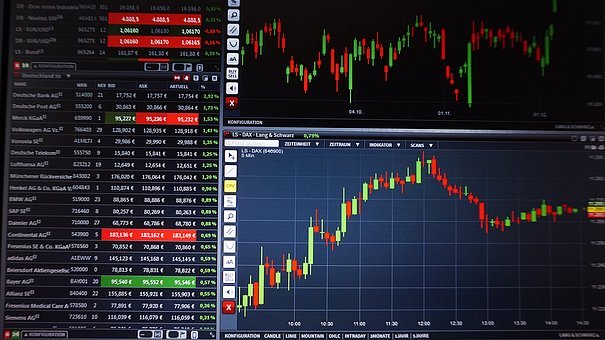Hedge Fund the rise of one whom nothing predestined to become the best manager of history “The man who solved the riddle of the markets” Wall Street Journal’s Greg Zuckerman’s book is the book that everyone is talking about on Wall Street. He portrays the rise of one whom nothing predestined to become the best manager of history. The mathematician Jim Simons, whose fortune exceeds 23 billion dollars, is at the origin of a UFO: the Medallion fund. Since 1988, this quantitative hedge fund has recorded an average annual gain of 66.1%, reduced to 39% after deducting its commissions. Over 20 years (1985-2004), George Soros’ hedge fund (Quantum fund) had an average annual return of 20.2%. Prize of excellence Aware of its value, the Medallion Hedge Fund has taken the highest rates in the industry, 5% of assets and 44% of profits generated through its performance. Hedge Fund typically take between 1.5% and 2% of assets and 20% of profits. Given its success, this Hedge Fund no longer accepted money from investors since 1993. In 2005, it was reserved exclusively for employees of the Hedge Fund. For Simons, this fund was to remain relatively small, less than $ 10 billion, to continue to perform well. The founder is aware of the law of diminishing returns in the financial world: the more the capital is important, the more a manager is struggling to remain as efficient.
Inconceivable In an interview with “Institutional Investor” in November 2000, the founder of Renaissance said: “Today we manage $ 4 billion, perhaps $ 7 to $ 8 billion in the future. But 70 billion, never! It is inconceivable. I am 62 years old and in the next three years I would like to pass the torch. Today the Hedge Fund manages $ 110 billion, and Jim Simons retired in 2010 while remaining involved in his company, being non-executive chairman. The Medallion has been a fantastic Hedge Fund appeal and advertising product, which has launched other funds such as Renaissance equities. He managed the increase in his assets and the change in size of his fund. “Make money when I sleep” In 1978, Jim Simons left his position as professor of mathematics at Stony Brook University to found his first Limroy Hedge Fund. Like other traders of the time, he tries to anticipate the decisions of the Federal Reserve but without much success. Yet at the time, he consulted the opinion of an economist, Alan Greenspan, who would become the president of the Fed between 1986 and 2007. His poor results prompt him to seek a trading system without human interference. “I do not want to worry about markets every minute. I want models that make me earn money when I sleep. He then embarked on quantitative management in the futures markets, particularly commodities. It speculates on potatoes, oil or pig carcasses but again the yields are random. The Hedge Fund, Renaissance Technologies, which was born in 1982, decided to move up a gear and began to build systematic and rigorous quantitative management. “There are movements and configurations in the markets that are not ‘visible to the naked eye’ by traders, but Renaissance wanted to exploit these anomalies in a systematic and rigorous way,” says Greg Zuckerman. Grey matter The fund is progressively recruiting the best mathematicians, astrophysicists, linguists, artificial intelligence specialists and computer scientists. It ensures their loyalty by allowing them to invest their bonuses in the Medallion Hedge Fund, where the average investment of employees is now around $ 50 million. Those who leave the company are subject to very strict confidentiality agreements and a non-competition clause over a very long period. It is not possible that they go into another Hedge Fund to disclose the secrets of the company.
The “home culture” of Renaissance, the antithesis of that of Hedge Fund of the time, was in three words: humility, patience, work. No star manager took positions according to his “instinct”, a word banned internally. His traders had to follow the signals of mathematical models and never take personal initiative. In fact, very few Wall Street professionals have been recruited by Renaissance who prefers to hire IBM alumni. The Medallion fund also invested some of its money in about 40 Hedge Fund. It was a way to seize opportunities that he had not identified himself while benefiting from information feedback on the markets. Data gathering. To help it achieve good market forecasts, this Hedge Fund was one of the first to recognize the importance of having as much financial data as possible. He has collected very old and good course histories. Databases often contain errors that a statistics specialist was responsible for flushing out and correcting. The fund was collecting data that was not available to its competitors: one of the contributors regularly went to the New York Fed in Manhattan to manually collect prices on bonds that were not public. Anticipating the rise of “high frequency trading” (ultra-fast trading machines), the fund invests early in technology and computers at the forefront to increase the speed of its transactions and be the first to seize opportunities. The “gross” anomalies in the markets have long since disappeared and the fund must innovate to remain efficient. “The mathematics we use can be sophisticated,” he told Institutional Investors, “but we start from data analysis, we do not have preconceived notions.” “In our business, we want action, we appreciate a certain level of volatility. In 2008, the year of the financial crisis, the Medallion fund jumped by 80%.





![skyscraper-3032786__340[1]](https://www.gevo.fr/wp-content/uploads/2019/11/skyscraper-3032786__3401.jpg)





